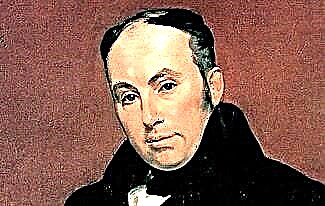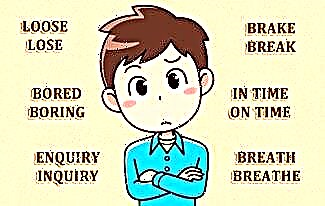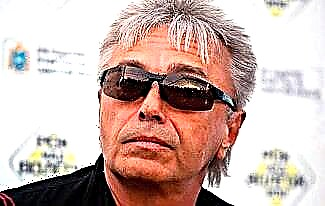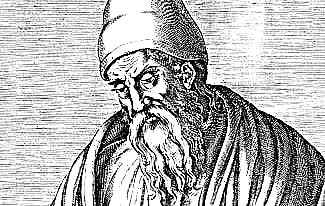For several hundred years now, historians have been breaking spears over Kievan Rus, or as they also call Ancient Rus. Some of them even deny the existence of such a state in principle. The situation is aggravated by the geopolitical situation that has developed and is constantly deteriorating in the former lands of Kievan Rus in the past 30 years, after the collapse of the USSR. Historians more and more often do not study the past, but fulfill the political order of the elites of their state. Therefore, it is absurd to hope that the discussion about Kievan Rus in the foreseeable future will have some kind of constructive conclusion.

And yet Kievan Rus, whether it be considered a state or not, existed. People lived on the lands from the Northern Dvina to the Taman Peninsula and from the tributaries of the Dnieper to the upper reaches. They lived in different ways: they fought and united, fled from oppression and moved under the arm of strong princes. Until the Mongol invasion in the 13th century, Kiev, even repeatedly passed from hand to hand and destroyed, remained a kind of symbol of unity, albeit an illusory unity. And ordinary people, as in all previous and future times, had to work in the field or in the workshop, earning their living, and not forget to pay tribute. When with grain or money, and when with your own blood or life. Let's try to abandon the historical disputes and endless wars of the princes for all the scanty and drying out allotments, and pay attention to the more mundane aspects of the life of the Slavs in Kievan Rus.
1. Sown in the territory of Kievan Rus, mainly, winter rye (food for people) and oats (food for horses). Spring wheat and barley were minor crops. On the richer southern lands, buckwheat, legumes and industrial crops - hemp and flax were grown.
2. Each yard had its own vegetable gardens with peas, cabbage, turnips and onions. Vegetables for sale were grown only around big cities.
3. Livestock, including horses, were small. The animals were kept for less than a year - after the onset of cold weather, pigs, goats and sheep without offspring went under the knife. The meat ration was supplemented by poultry and hunting.

4. Own alcoholic drinks were available only of a very small strength, within a few percent. They drank mainly honey, tea and jelly. Alcohol was available only to the top of society.
5. The main agricultural export commodities were honey and its accompanying wax.
6. Commercial agriculture was almost exclusively on the princely and monastic lands. Independent farmers worked practically only to feed their own and their families. Nevertheless, foreign contemporaries describe a wide variety of products sold in the markets at low prices for Europe.
7. Income from the princely monastic lands were large. Monasteries could afford to keep orchards, and the princes kept herds of horses in the thousands.
8. The word “graveyard” began to denote a cemetery only around the 18th century. Initially, during the times of Kievan Rus, it was part of the territory of the principality, in which there was a representative for the collection of taxes. Princess Olga invented the churchyards in order to stop polyudye - winter tax collection. During the polyudye, the princes and squads frolicked with might and main, sometimes collecting everything they saw (for this, in fact, Prince Igor suffered). Now, in fact, a poll tax was introduced, which was collected in the churchyard.
9. Trade was very important for the economy of Kievan Rus. There were many cities that arose as a place for the exchange of goods between artisans and farmers, therefore, there was something to trade. Kievan Rus conducted an active foreign trade, being on the way from the Varangians to the Greeks. Furs, fabrics, wax and jewelry were exported abroad, but slaves were the main export. And not foreigners captured somewhere, but compatriots. The main imported goods were weapons, non-ferrous metals, spices and luxury goods, including expensive fabrics.

10. In Russia, the family was not a legal unit in the current sense - it did not own property. Something belonged to the wife, something to the husband, but it was not united in the family and could be sold, passed on and inherited separately. This is evidenced by the numerous preserved deeds and wills. One of these documents informs about the purchase of land by the husband from his wife, her sister and son-in-law.
11. At first, princes and warriors were engaged in trade. From about the 11th century, princes began to be content with duties, and warriors with salaries.
12. By the time of the Mongol invasion, there were about 60 crafts in Russia. In some cities there were even up to 100 of them. In terms of the development of technology, artisans were not inferior to their European colleagues. Artisans melted steel and made weapons, made products from wood, glass and non-ferrous metals, and spun and fabricated fabrics.

13. Despite the serious property stratification, there was no hunger or an abundance of beggars in Kievan Rus.
14. Numerous storytellers, who entertained the people in the markets, described in their works the feats of arms of the heroes of the past. There were up to 50 such heroes.
15. Cities and fortresses were built of wood. There were only three stone fortresses, plus the Vladimir Castle of Andrei Bogolyubsky.
16. In Kievan Rus there was plenty of literate people. Even after baptism, literacy did not become the prerogative of church leaders. Even birch bark letters from everyday life have been preserved.

Birch bark invitation to a date
17. During its heyday Kiev was a very large and beautiful city. Overseas guests even compared it to Constantinople, which was then the real capital of the world.
18. After the baptism of Rus by Vladimir, the influence of paganism remained very strong. Even princes and their entourage often called children by Slavic names. Sometimes this led to confusion: the chroniclers call the same person by different names: received at baptism and given at birth.
19. In addition to the numerous Slavic tribes, other peoples lived in Russia. So, in Kiev there was a fairly large Jewish community. In turn, many Slavs lived in the cities bordering on Kievan Rus, primarily on the Don.
20. Despite a fairly well-developed system of law (in “Russkaya Pravda”, for example, there are more than 120 articles), Kievan Rus was destroyed precisely by legal uncertainty in the inheritance of the title of prince. Inheritance according to the principle of seniority in the clan, when the uncle, for example, received a table bypassing the prince's son, could not but lead to conflicts and civil strife.
21. The campaign of Prince Oleg to Constantinople in 907 in the annals looks like a Hollywood action movie: 2000 boats of 40 warriors, rushing to the gates of the city on wheels. Moreover, 12 hryvnia (this is about 2 kg) tribute for each rook's oarlock. But the 911 agreement is quite real: mutual friendship and respect, inviolability of merchants, etc. Not even a word about duty-free trade. But there is a clause on providing assistance to foreign sailors in distress. In Europe in those years, coastal law flourished with might and main: everything that drowned near the coast belongs to the owner of the coastal land.
22. In one trade trip to Constantinople, up to 5,000 tons of cargo were transported from Kiev. They were less transported back, because Byzantine goods were lighter. Through the Saint-Gotthard Pass - the only road connecting Northern Europe with Southern Europe - after 500 years, about 1,200 tons of cargo were transported per year. There was also another way of transporting goods from Russia to Constantinople and back. Slaves sat on the oars of ships, which Rus was very active in trading. In Byzantium, not only brought goods were sold, but also slaves and even ships - “to the Greeks on the board”. The return journey was made by land.
23. Prince Igor was killed by the Drevlyans for intemperance in collecting tribute. First, he allowed the Varangian mercenaries to rob this tribe, and then came with the same purpose himself. The Drevlyans realized that there was no other way to get rid of the grand prince's racketeering.
24. During the reign of Olga, Russia could well have received baptism from the Pope. The schism between the churches had just begun, and therefore the princess, baptized in Constantinople, after disagreements with the local hierarchs, sent messengers to the emperor Otto I. He sent a bishop to Russia, who died somewhere along the way. Get the bishop to Kiev, the story could have gone differently.
25. The legend about the “casting of religions”, which, allegedly, was conducted by Prince Vladimir before the baptism of Rus was most likely invented to show how careful and thoughtful the prince-baptist was. It says that the prince called on the preachers of Catholicism, Judaism, Islam and Orthodoxy. After listening to their speeches, Vladimir decided that Orthodoxy was more suitable for Russia.
26. The assumption that he needed a political union with Byzantium looks much more reasonable. Vladimir himself had already been baptized, and the Byzantine emperor needed military assistance from the Russians. In addition, Vladimir managed to pronounce the condition of autocephaly of the church in his principality. The official date of the adoption of Christianity by Russia is 988. True, even in 1168, Prince Svyatoslav Olgovich expelled Bishop Anthony from Chernigov because he tormented the prince with the demand not to eat meat on fast days. And bigamy openly existed until the 13th century.
27. It was under Vladimir the Great that the practice of building notch lines, fortifications and fortresses to protect the borders of the state from nomads began. The last such fortification can be safely considered the so-called Stalin Line, built before the Great Patriotic War.
28. The first Jewish pogrom in the history of Russia took place in 1113. The raids of the Polovtsians ruined and decided the shelter of many people. They flocked to Kiev and had to borrow money from wealthy Kievites, many of whom were coincidentally Jews. After the death of Prince Svyatopolk, the inhabitants of Kiev called for the principality of Vladimir Monomakh. At first he refused, and after that the people expressed their dissatisfaction with the robberies and pogroms. From the second time, Monomakh accepted the reign.
29. Foreign sources report that in the 11th century Kiev was a competitor to Constantinople. Through marriages, Yaroslav the Wise became related to the rulers of England, Poland, Germany, Scandinavia, France and Hungary. Yaroslav's daughter Anna was the wife of the French king Henry I, and her daughter, in turn, was married to the Holy Roman Emperor Henry IV.
30. During the heyday of Kievan Rus (in the XIII century), there were 150 cities on its territory. Two centuries earlier there were only 20. The name “Gardarika” - “Country of cities” - given to Russia by foreigners, did not appear because they were amazed by the number of cities, but because of their territorial density - any more or less large village was fenced off with a wall ...
31. A typical illustration of centrifugal tendencies in Russia: the Ipatiev Chronicle for about 80 years fixes 38 "showdowns" between the princes. During the same time, 40 princes were born or died, there were 8 eclipses of the Sun or Moon and 5 earthquakes. The princes fought off invasions or themselves went on campaigns against foreigners only 32 times - less often than they fought among themselves. Some “strife” continued for decades.
32. The money of Kievan Rus' to the uninitiated could greatly amaze with its diversity. Any coins made of gold and silver, brought from distant countries, were in circulation. The princes minted their own coins. All these were of different sizes and dignity, which provided work for the money changers. The monetary unit seemed to be the hryvnia, but, firstly, the hryvnia were of different weights, and secondly, they were of different types: gold, silver and hryvnia kun (short for “marten fur”). Their cost, of course, also did not coincide - the kun hryvnia was four times cheaper than the silver hryvnia.

33. Of the metals on the territory of Kievan Rus, only iron was present. Lead was brought from Bohemia (present-day Czech Republic). Copper was brought from the Caucasus and Asia Minor. Silver was brought from the Urals, the Caucasus and Byzantium. Gold came in the form of coins or spoils of war. They minted their own coins from precious metals.
34. Novgorod was the cradle of professional construction trade in Russia. Moreover, in other lands, where they preferred to build artels, this specialization caused ridicule. Before one of the battles, the Kiev voivode, wanting to provoke the Novgorodians, promised to convert them to slaves and send them to Kiev to build houses for the Kiev soldiers.
35. Cloth, felt, hemp and linen were used to make clothes. Thin fabrics, including silk, were imported mainly from Byzantium.
36. Hunting played an important role in the economic life of the population of Kievan Rus. She provided meat for food, skins for clothing and taxes. For the princes, hunting was entertainment. They kept kennels, hunting birds, and some even had specially trained leopards.
37. Unlike European feudal lords, Russian princes did not have castles or palaces. The prince's house could be fortified if at the same time he served as a detachment - an internal city fortification. Basically, the houses of the princes practically did not differ from the dwellings of the boyars and wealthy townspeople - they were wooden houses, perhaps larger in size.
38. Slavery was quite widespread. It was possible to get into slaves even by marrying a slave. And according to foreign evidence, the predominant language of the eastern slave markets was Russian.









